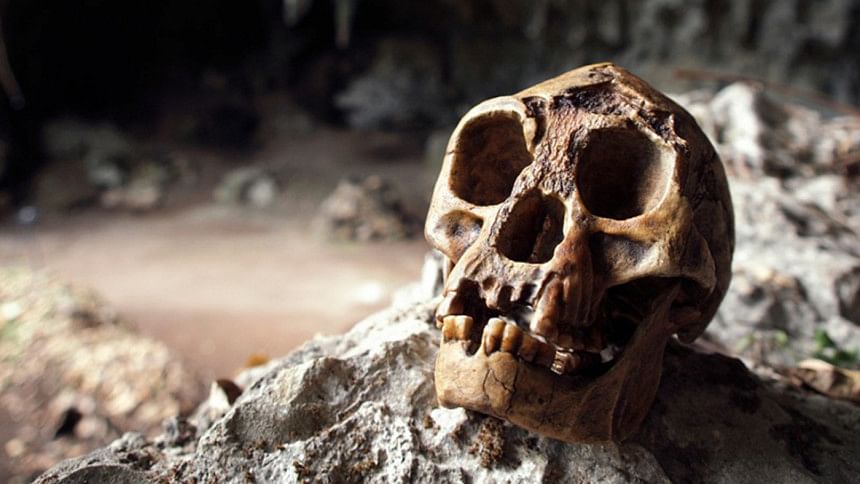Secret crypt found where hobbit humans lived

The little human hobbits of Flores Island in Indonesia had a crypt. And early signs suggest at the exciting likelihood of more Homo floresiensis bones in this newly discovered chamber, reports newscientist.com
H. floresiensis became a global sensation when it was revealed a decade ago. The delicate remains in a cave on Flores island in Indonesia told the remarkable story of a tiny species of early human, standing about 1 metre tall.
What's more, it lived as recently as 18,000 years ago – long after other early human species, including the Neanderthals, had vanished.
Yet controversy remains over whether the hobbit is a separate species, or simply a population of unusually small Homo sapiens, at least one of whom had some form of disease that impaired brain development.
This, cynical researchers say, explains why the single hobbit skull found to date had a brain no larger than a chimpanzee.
More bones would finally lay the debate to rest, but so far searches of the Liang Bua rock shelter, where the hobbit remains were unearthed, have drawn a blank.
In 2006, Michael Gagan at the Australian National University in Canberra and his colleagues visited the cave, and in one dimly lit corner stumbled upon the entrance to a steep passageway.
They abseiled down and found a whole new chamber.
The team has now excavated the upper layers of sediment in the Liang Bawah cave.
They uncovered animal bones, along with stone tools that are few centuries or millennia old, probably left there by modern humans.
But deeper, older layers in the chamber could contain H. floresiensis remains, they say.
"Who knows what amazing ancient bones could be buried there?" says Gagan.
The team's work also indicates that for a big chunk of the last 200,000 years, there was actually an easy to use "front" entrance to the chamber, right next to the entrance to the Liang Bua rock shelter.
So it might have been a site of hobbit occupation before the front entrance became blocked.
There is another reason why the new chamber might be significant. Inside Liang Bua, the sediment – and evidence for the hobbit – dates back only 100,000 years.
Earlier material has apparently eroded away. Since the new cave is lower down, it might contain some of that sediment.
If so, we could begin to piece together the hobbits' origins and reach a conclusion on whether it is a separate species – particularly if the new cave yields a second hobbit skull as small and strange as the first.
"Until such a discovery is made, people should be very cautious about recognising a supposed new species," says Robert Martin at The Field Museum in Chicago.
Gagan, who specialises in ancient tropical climates rather than human prehistory, hopes further excavation of the cave will now take place.
"Here's hoping the new paper will inspire the archaeologists to go down there and have a look," says Gagan.

 For all latest news, follow The Daily Star's Google News channel.
For all latest news, follow The Daily Star's Google News channel. 



Comments